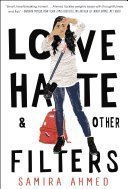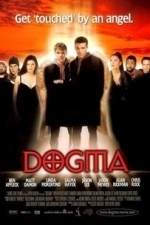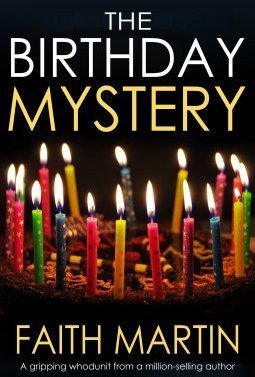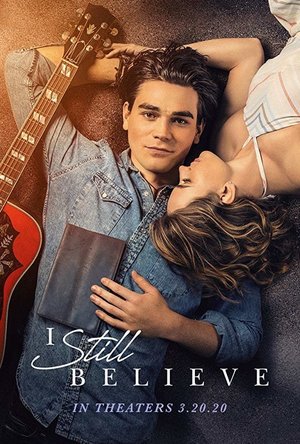Goddess in the Stacks (553 KP) rated Love, Hate, and Other Filters in Books
Jun 18, 2018
I really loved Maya in this book; I can understand her parents' fears, but also her rebellion when they take away the freedom she values. I think my favorite character, though, was the side character Kareem. I kind of hope Ahmed writes another book and tells us his story. He was just so NICE.
I loved the writing and the characters overall, but there were a few sentences that made me pause and repeat them in my head because they were just outstanding.
"The vows are simple, the same kind of pledges I've heard at weddings of every faith. Except at the end, there is no kiss. I close in for the money shot anyway, hoping for a moment of rebellion from Ayesha and Saleem. But no. No public kissing allowed. Full stop. The no kissing is anticlimactic, but some taboos cross oceans, packed tightly into the corners of immigrant baggage, tucked away with packets of masala and memories of home."
And also, about arranged marriages and being a good Indian daughter:
"And the Muslim? The Indian? That girl, she doesn't even get the dream of the football captain. She gets a lifetime of being stopped by the FAA for random bag searches every time she flies. She gets the nice boy, the sensible boy, the one her parents approve of and who she will grow to love over years and children and necessity."
Maya is a whip-smart young girl who wants to be a film maker, and she spends most of her time behind a camera, observing. Her observations are really what make this book shine, and her snark had me laughing throughout the book.
I really loved this book, if you couldn't tell! I love minority-driven YA, and this one reminds me quite a lot of Saints and Misfits. Given how much I loved both of these, I really need to read When Dimple Met Rishi!
You can find all my reviews at http://goddessinthestacks.wordpress.com
Phillip McSween (751 KP) rated Dogma (1999) in Movies
Jul 28, 2018
Acting: 10
Beginning: 8
Characters: 10
You want characters? This film has them by the boatload. Outside of the fallen angels, you will meet the likes of a woman who is the savior of humanity, a messenger from heaven, and an apostle holding a grudge just to name a few. Dogma is a melting pot of personalities and temperament which is a huge part of what makes the film such a good one. You are going to love Jay the Prophet. He is just plain hilarious. And Alan Rickman's dry sarcasm always makes for a good laugh.
Cinematography/Visuals: 8
Conflict: 8
There are never any real lulls where the film gets boring. There is a lot of dialogue but the progression of the conflict keeps the film moving at a solid speed. I did dock a couple of point for a brief dead spot about an hour in, but there is pretty solid action and comedy throughout for the most part.
Genre: 7
There is a special scene where the characters are discussing a John Hughes movie. The dialogue builds and, before you know it, you're cracking up at every word they're saying. It's scenes like these that contribute to making the film a pretty solid comedy. If the strip club scene doesn't make you laugh, I don't know what will!
Memorability: 10
The originality of the plot and the messaging help the film stand out in my mind among a sea of other movies I've seen. I appreciated the interesting introspection of faith and life. The Belief Vs. Ideas convo was another solid moment. Dogma is funny, but it gives you some things to digest as well.
Pace: 8
Plot: 5
While the plot is certainly intriguing, it was also a bit of a hindrance for me as it got confusing as all get out in certain spots. The struggle to find a short plot description above was real. Not sure what they could have done differently here, but there were certain spots where my experience was dampened by all the crazy stuff happening.
Resolution: 8
Overall: 82
With a solid cast (Ben Afleck and Matt Damon always work well together) and a number of memorable moments, Dogma is definitely worth a watch. Glad I can check this one off the list and add it to my favorites.
BookwormMama14 (18 KP) rated Until the Dawn (Until the Dawn, #1) in Books
Jan 2, 2019
Quentin Vandermark is of the belief that if you can't see it or touch it, then it doesn't exist. This includes God and the supernatural power his grandfather, Nickolaas Vandermark, believes is cursing Dierenpark. A tragedy occured 60 years ago and the Vandermark's left Dierenpark abandoned ever since. The family returns without notice, only to see it destroyed. Nickolaas is determined to tear down Dierenpark in hopes of demolishing the "curse" that seems to have haunted the family for centuries. Widowed and injured, Quentin brings his son Pieter with him to Dierenpark to tear down the beautiful home. He is just doing his grandfather's bidding when his life is drastically changed. At Dierenpark he meets Sophie van Riijn, Sophie is a volunteer for the newly established Weather Bureau. For the last nine years she has used the roof of Dierenpark for her weather station, without the permission of the owners. Pieter immediately takes to Sophie, not having a mother of his own, he craves a motherly figure. While Quentin is all cynicism, doubt, gloom and depression. Sophie exudes life, hope, joy and faith in every ounce of her being. The past is finally brought to light, but is it in time to save Dierenpark and Quentin? Will science be able to prove the strange goings on? Will Quentin open himself up to love? Or will he brood in his misery until his last breath?
"Above all else, love one another."
The progressive era is a fascinating time period to read. So many scientific advances and discoveries take place in this era. I am currently watching Murdoch Mysteries (Netflix). It is set in the same time as this book and the scientific progress that is witnessed is incredible! Until the Dawn is a story of good and evil, life and death, hope and despair. With our main characters so completely different it is very clear to see how our beliefs affect every aspect of our lives. The main theme throughout this story is love. Through the good times and difficulties, God has called us to love one another. I have heard that this story has been compared to Jane Eyre and I do see similarities. Quentin is a horrid, miserable man and Sophie longs to see him saved. I won't expand anymore because of spoilers, but if you are a fan of Jane Eyre, I believe you will enjoy this recent publication by Elizabeth Camden.
I received a free digital copy of Until the Dawn from Bethany House Publishers through NetGalley in exchange for my honest review.
BookwormMama14 (18 KP) rated The Secret of Pembrooke Park in Books
Jan 2, 2019
England, 1817, Abigail Foster and her family are in the midst of a financial crisis that could ruin them forever, when an offer to let Pembrooke Park is brought before them. The house has been vacant for almost 20 years, and there is a lot of clean up needed before they can move in, but the terms seem too good to be true. This is just the opportunity the Foster’s need so they can begin to rebuild their lives. Abigail and her father travel to the village of Caldwell to begin fixing up the property. It is not long before whispers and rumors make it to Abigail’s ears regarding the previous inhabitants. Whispers of treasure and murder and ghosts. What happened here so many years ago? Will Abigail be able to uncover the truth? Clues are found and mysterious letters are sent to Abigail from what appears to be someone who lived at Pembrooke Park. Does the miniature doll’s house hold the key to where the treasure was hidden? Abigail befriends the previous steward’s daughter, Leah Chapman, who has her own mysteries of the past that she is concealing. William Chapman, Leah’s sister and the local pastor, seems to become interested in Abigail, but will Miss Foster’s sister, Louisa sweep him off his feet as she does to every man she meets? And Mr. Chapman is not the only man that has taken an interest in Abigail. Truth, faith and love are the primary factors guiding our players. “Lay not up for yourselves treasures upon earth, where moth and rust doth corrupt.”
I have not enjoyed a book so much as I enjoyed reading The Secret of Pembrooke Park. I stayed up late many a night reading when I should have been sleeping. Most definitely a page turner if I ever read one. I cannot praise Mrs. Klassen enough for her fine works. The historical accuracy, the depth, the feeling. Creative liberties are used in regards to classes intermingling, but that’s what makes her books so intriguing. The suspense and mystery was mild (compared to the thrillers my husband reads), but it was enough to make my head turn at the sounds of my own house creaking in the night. I am looking forward to her next release. I told my husband that I want the rest of Julie Klassen’s books for Christmas this year!
As a part of their blogger review program, I received a free copy of The Secret of Pembrooke Park from Bethany House Publishers. All opinions expressed are mine alone.
Midge (525 KP) rated The Birthday Mystery in Books
Dec 29, 2018
First, we are introduced to Jenny who is catering for the twenty-first birthday party of upper-class twins, Alicia and Justin. In her late twenties, Jenny is an impressive woman. Curvaceous and sexy, she’s a modern single woman, living the lifestyle that suits her – that of a travelling cook. Her famous father is a ‘celebrity’ cook, divorced from Jenny’s mother. Jenny is happy travelling the country catering for events and cooking great food. She is on a mission to bring back traditional home cooked food and to offer new and exciting recipes made with fresh ingredients. She arrives at the twins family country house located in a picturesque and charming village and is immediately met by the police. A young man has drowned in the pond. Was it an accident or murder?
The birthday party goes ahead and then, just after midnight, everyone gathers for a champagne toast . . . and one of the guests falls down dead. The police are baffled and there is a whole party full of suspects.
Jenny finds crime very distracting, especially when there is chocolate to temper or pike to poach. She is very observant, with an agile mind and an amazing ability to interpret clues and hidden meanings. Her wit and sense of humour help her sanity when all around her, people are dropping like flies. When it comes to someone possibly adding the extra ingredient of poison to her own precious recipes, Jenny isn't going to take it lying down. She has a reputation to protect.
Jenny Starling won't stop until the murderer is found.
There are many suspects in this mystery, clues a-plenty and red herrings all the way through this book. It was a thoroughly satisfying read and I often found myself asking the same questions as Jenny and I was kept in suspense to the end. The pacing in "The Birthday Mystery" was very good and I never lost interest, as it wasn't long before something intriguing would happen. Things came together for a great finish and wrapped everything up very neatly.
I'm definitely looking forward to reading the next novel featuring Jenny Starling very soon and other books by the author, Faith Martin. "The Birthday Mystery" whets your appetite for more to come.
My thanks to NetGalley, Joffe Books and the author for providing me with an advanced copy of this novel.
Veronica Pena (690 KP) rated I Still Believe (2020) in Movies
Apr 25, 2020 (Updated Apr 25, 2020)
What annoys me about the critics that watched this film and their reviews is that they're almost surprised that she dies and that it's a Christian film. Like, do you know anything about Jeremy Camp and who he is? He's literally a Christian singer - for a living. I think this is one of those films where the audience is way more insightful than critics. I've said it before and I'll say it again, I feel like it's so easy for critics to critique and not just escape in the film. But I digress.
K.J. Apa and Britt Robinson are forces in this film. I think that they already have long, successful careers in front of them, without a doubt, but when they work together, they make some serious magic. This is their second film together and I could watch them in a million more. Shania Twain was a nice plug. I think sometimes when you put big country stars in films - Trace Adkins, Shania, etc. - it can be kind of overpowering (depending on the film), but she's very understated but memorable. The standout though, to me, other than the leads was Gary Sinise as Jeremy's dad. There's a moment towards the end of the film where he's just overcome and he leans against the wall and there's a picture of K.J. (meant to be Jeremy) under him and it just hits you. I feel like that was his strongest moment and one of the best moments of the film.
Overall, I think this film is really beautiful. I'm sure I'll come back to it a million times more. I definitely recommend watching it, just have tissues.

Joan of Arc: The Image of Female Heroism
Book
The fame of Joan of Arc began in her lifetime and, though it has dipped a little now and then, she...
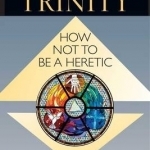
The Trinity: How Not to be a Heretic
Book
"Trinity" is Christianity's most basic description of who God actually is-and who he needs to be in...
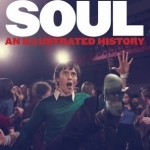
Northern Soul: An Illustrated History
Elaine Constantine and Gareth Sweeney
Book
The story of Northern Soul is one of practically total immersion, dedication and devotion, where the...

100 Yoga Spa Relax Music
Health & Fitness
App
100 Yoga Spa Relax Music - The Greatest Yoga,Spa,Meditation,Healing and Manifestation Collection...
